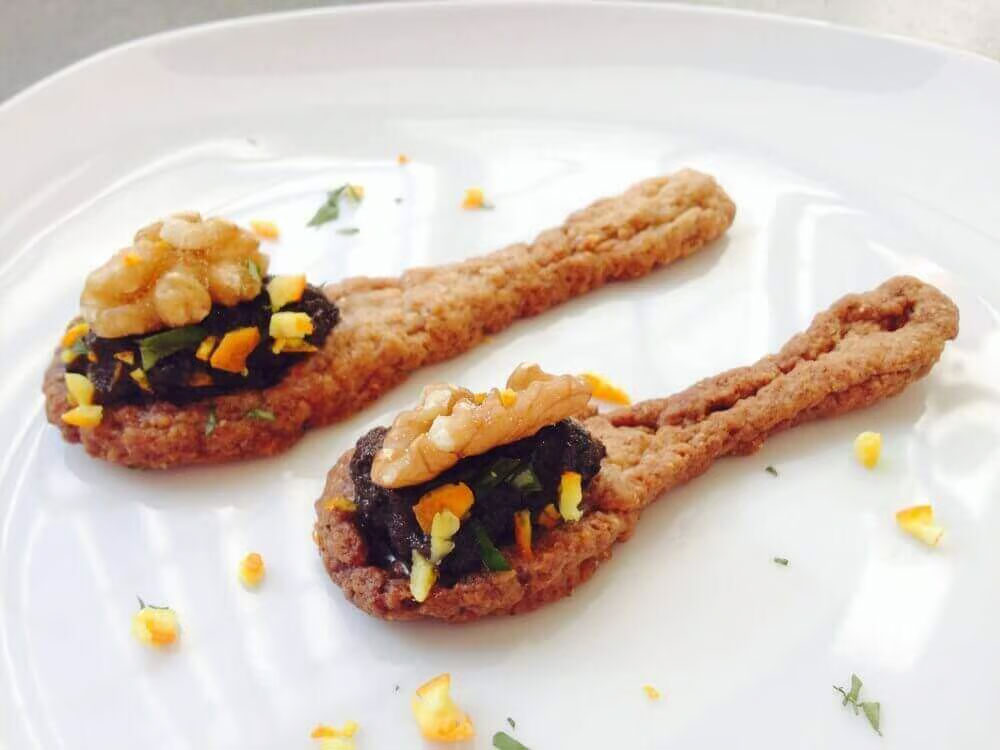Breaking 6 Myths About 3D-Printed Food

Photo Source: All3DP
When it comes to modern gastronomy, 3D-printed food has emerged as a fascinating yet often misunderstood innovation. Despite its potential to revolutionize how we eat, misconceptions about its safety, nutritional value, and accessibility persist.
Related: 3D Printing in the Food Industry: A Simple Guide
In this blog, we will unravel the truth behind the most prevalent myths surrounding 3D-printed food. So with that, let’s go!
On This Page
- Myth 1: 3D-Printed Food Isn’t Safe
- Myth 2: 3D-Printed Food Lacks Nutrition
- Myth 3: 3D-Printed Food Is Cost-Prohibitive
- Myth 4: 3D-Printed Food Sacrifices Taste and Texture
- Myth 5: 3D-Printed Food Isn’t Environmentally Friendly
- Myth 6: 3D-Printed Food Is Just a Passing Fad
Myth 1: 3D-Printed Food Isn’t Safe
There’s a widespread misconception that 3D-printed food poses safety risks. However, rigorous testing and adherence to food safety standards ensure that 3D-printed food is entirely safe for consumption.
3D food printers utilize food-grade materials that undergo stringent quality checks to meet regulatory requirements, guaranteeing the safety of the final product.
Myth 2: 3D-Printed Food Lacks Nutrition
Some believe that 3D-printed food lacks the nutritional value of traditionally prepared meals. Contrary to this belief, advancements in technology allow for precise control over the nutritional composition of 3D-printed food.
Researchers are exploring methods to enrich 3D-printed meals with essential nutrients, ensuring that they offer both convenience and nutritional benefits. According to Lynette Kucsma, co-founder of 3D-food-printing company Natural Machines in Barcelona, “When you 3D print food you can customize the nutrition,” – which means you actually have the liberty to tailor the nutritional content based on your dietary needs.
Myth 3: 3D-Printed Food Is Cost-Prohibitive
Another misconception is that 3D-printed food is a luxury reserved for the elite due to its high cost. However, ongoing technological advancements are making 3D food printing more affordable and accessible.
The decreasing costs of 3D printers and food-grade materials, coupled with the development of user-friendly models for home use, are making 3D-printed food a viable option not only for business, but also for the domestic setting across various demographics.
Myth 4: 3D-Printed Food Sacrifices Taste and Texture
Many skeptics argue that 3D-printed food compromises on taste and texture compared to traditional meals. While it is still a challenge to create the same taste and texture we find in traditionally prepared and manufactured food, chefs and food scientists are continuously refining 3D printing techniques to create dishes that are not only visually appealing but also flavorful and textured.
Ingredient combinations, layering methods, and printing parameters all play a significant role in the process. Nonetheless, it’s still possible to achieve the desired taste and texture in 3D-printed food, debunking the myth of inferior quality.
Myth 5: 3D-Printed Food Isn’t Environmentally Friendly
Concerns about the environmental impact of 3D-printed food have led some to believe that it may exacerbate issues like waste and pollution. However, 3D food printing offers several sustainability advantages over traditional food production methods.
Through precise ingredient measurements and on-demand production, 3D food printing minimizes food waste and reduces the carbon footprint associated with transportation and storage, making it an eco-friendly alternative.
Related: Is 3D Printing Eco-Friendly? How 3D Printing Reduces Waste
Myth 6: 3D-Printed Food Is Just a Passing Fad
There’s a misconception that 3D-printed food is merely a gimmick with little practical value. Contrary to that, its potential applications in various industries, including healthcare and disaster relief, highlight its significance beyond novelty.
From addressing dietary restrictions to facilitating personalized nutrition, 3D-printed food has the potential to solve real-world challenges, proving that it’s far more than just a passing trend.
Debunking these common myths surrounding 3D-printed food can pave the way for a better understanding of its potential and significance in the culinary landscape. Embracing innovation and dispelling misconceptions allow us to harness the full benefits of 3D food printing, shaping a future where food is not only delicious and nutritious, but also sustainable and accessible to all. The next time you encounter skepticism about 3D-printed food, remember to separate fact from fiction and explore the exciting possibilities it presents.
Looking for quality 3D printing in the Philippines? Contact us today to learn more about our products!


